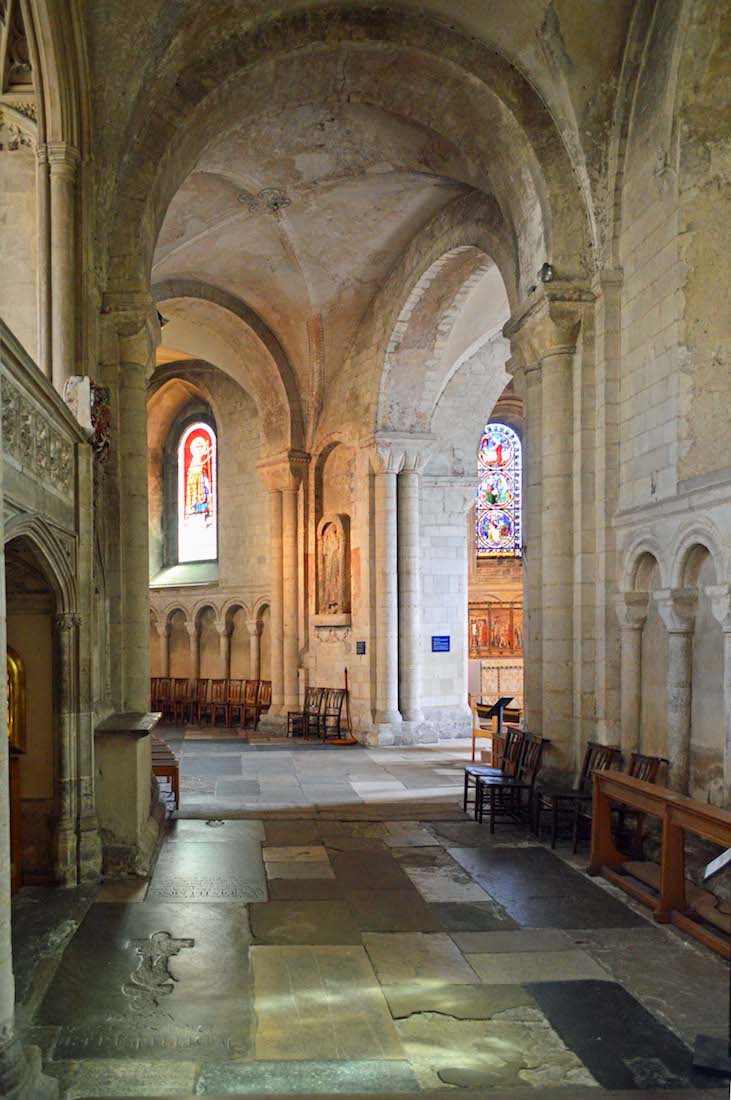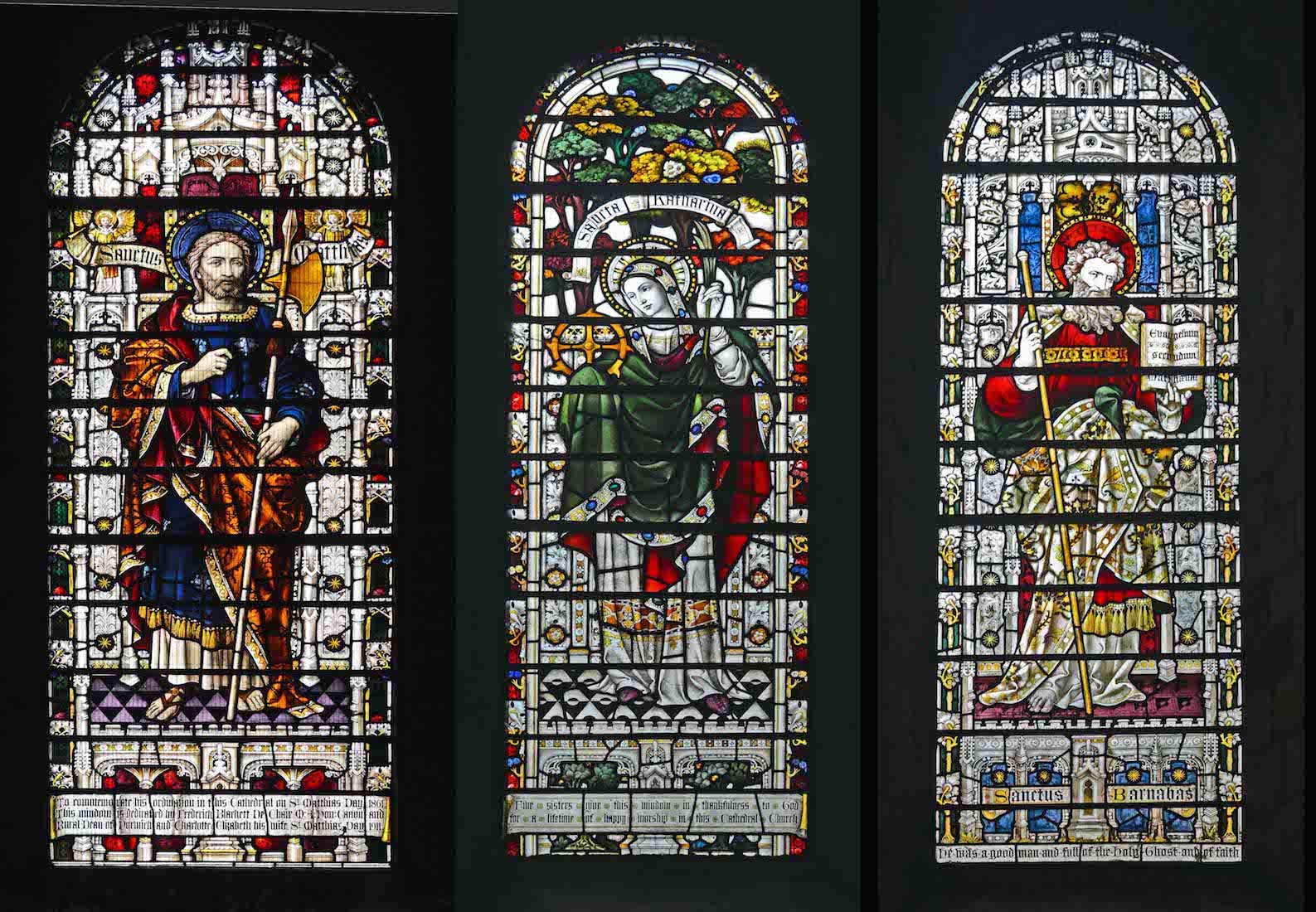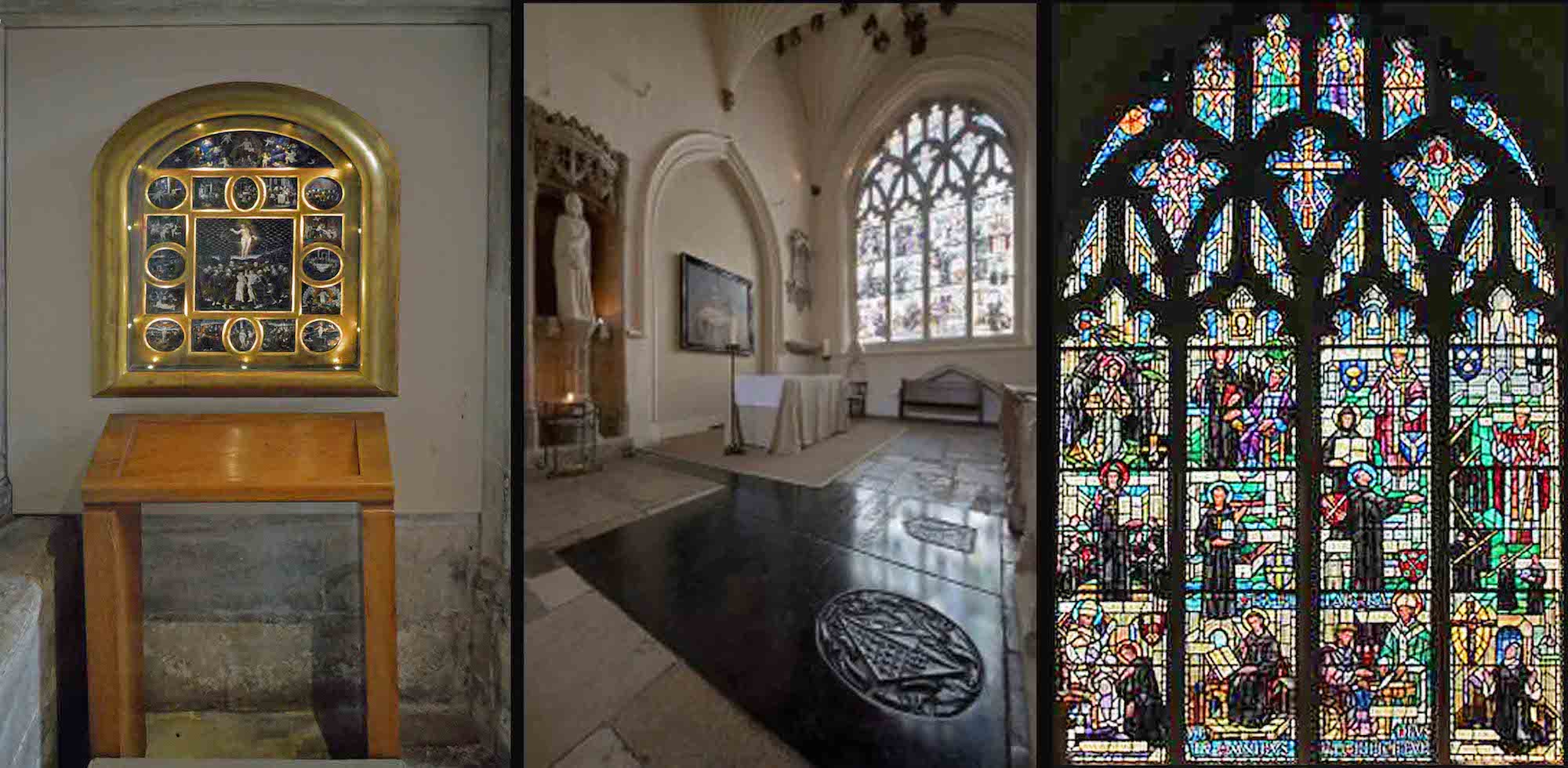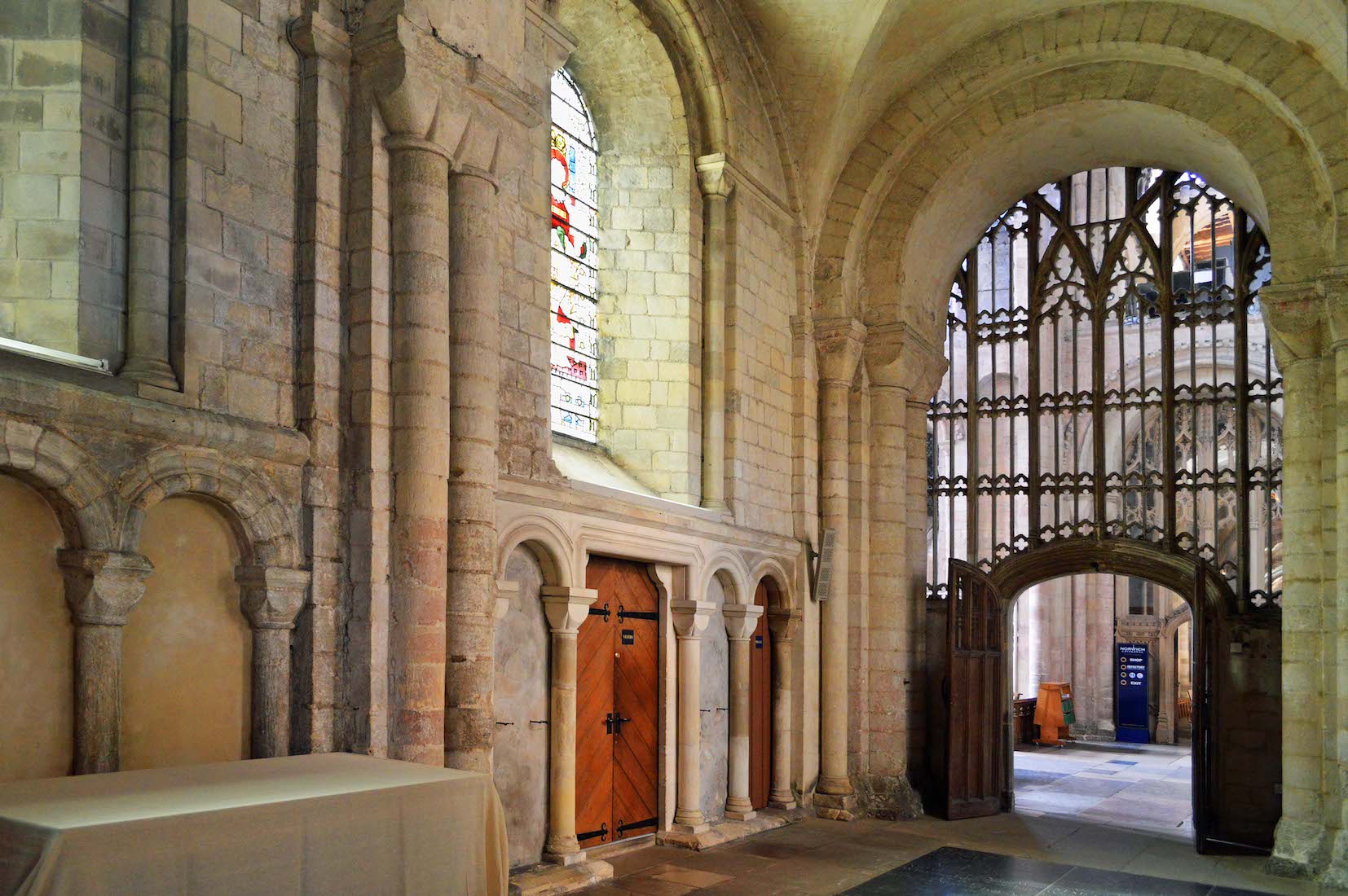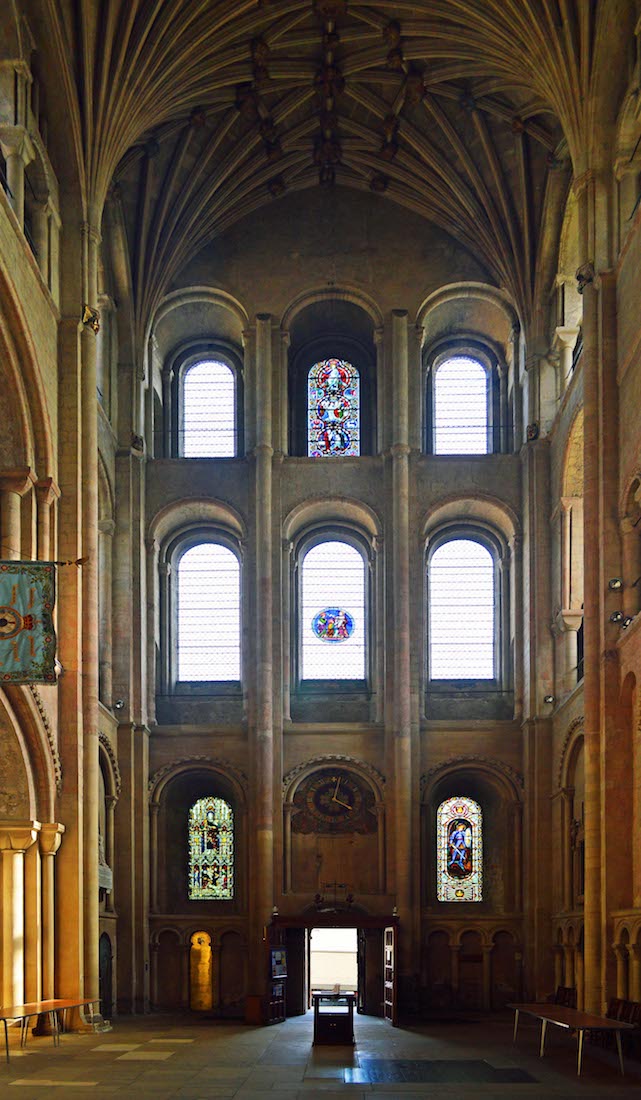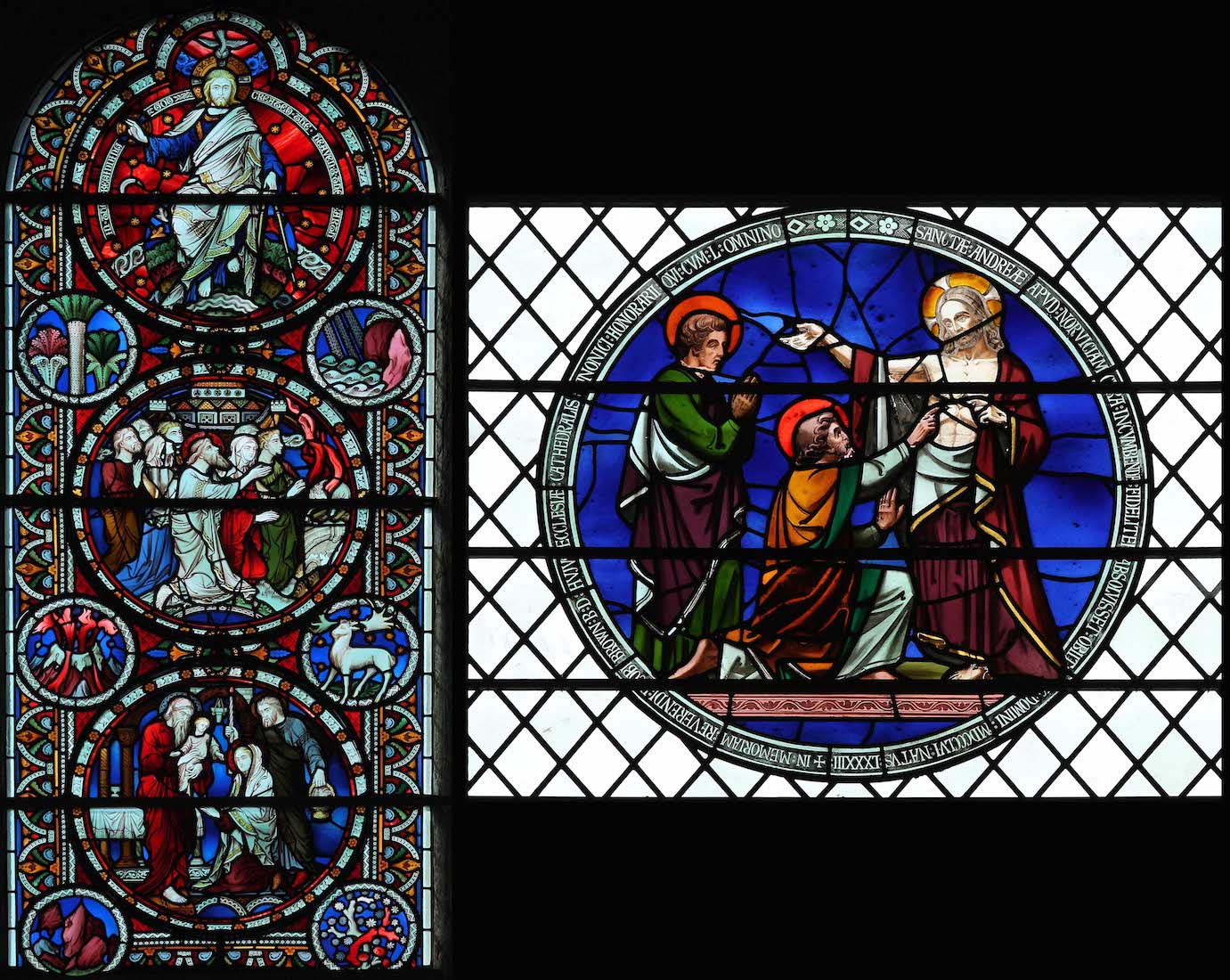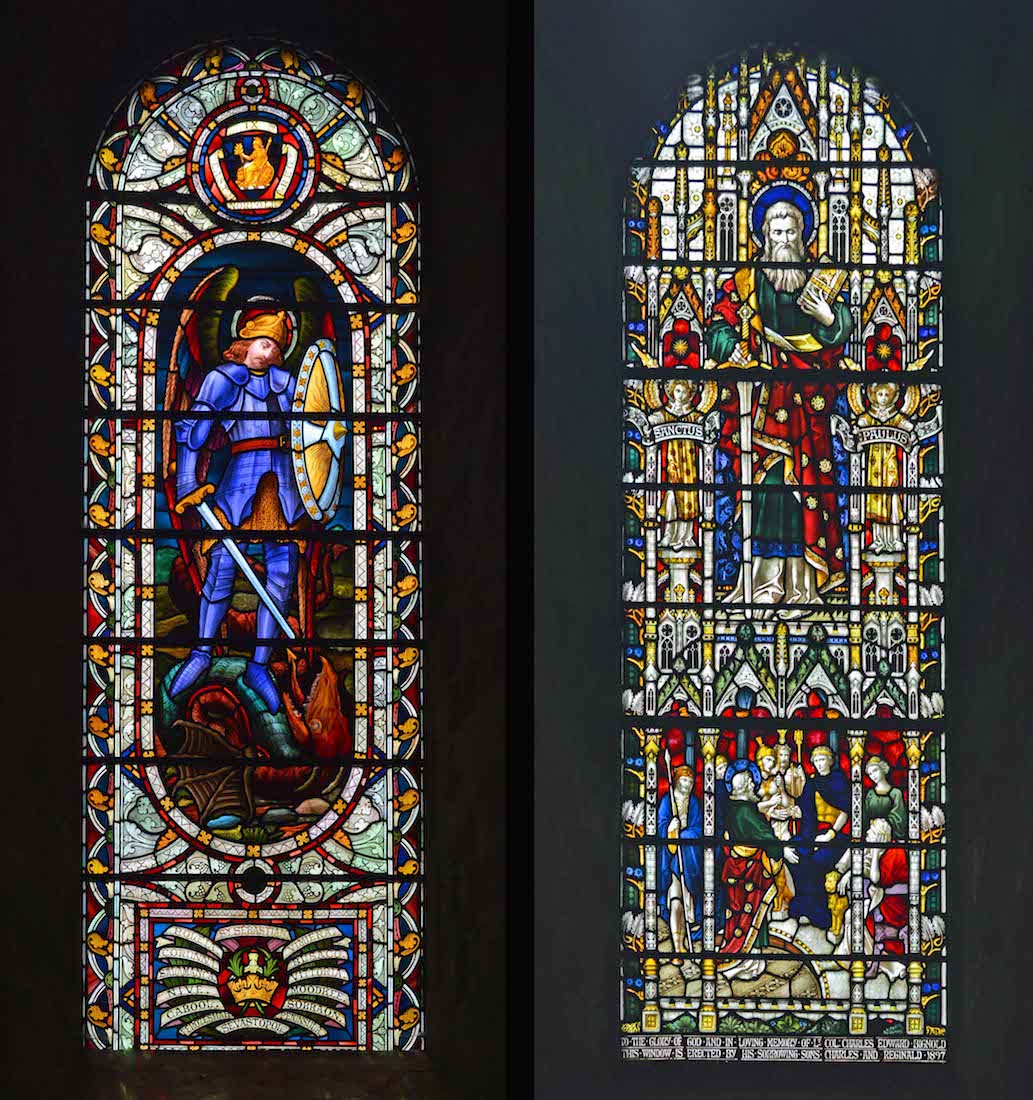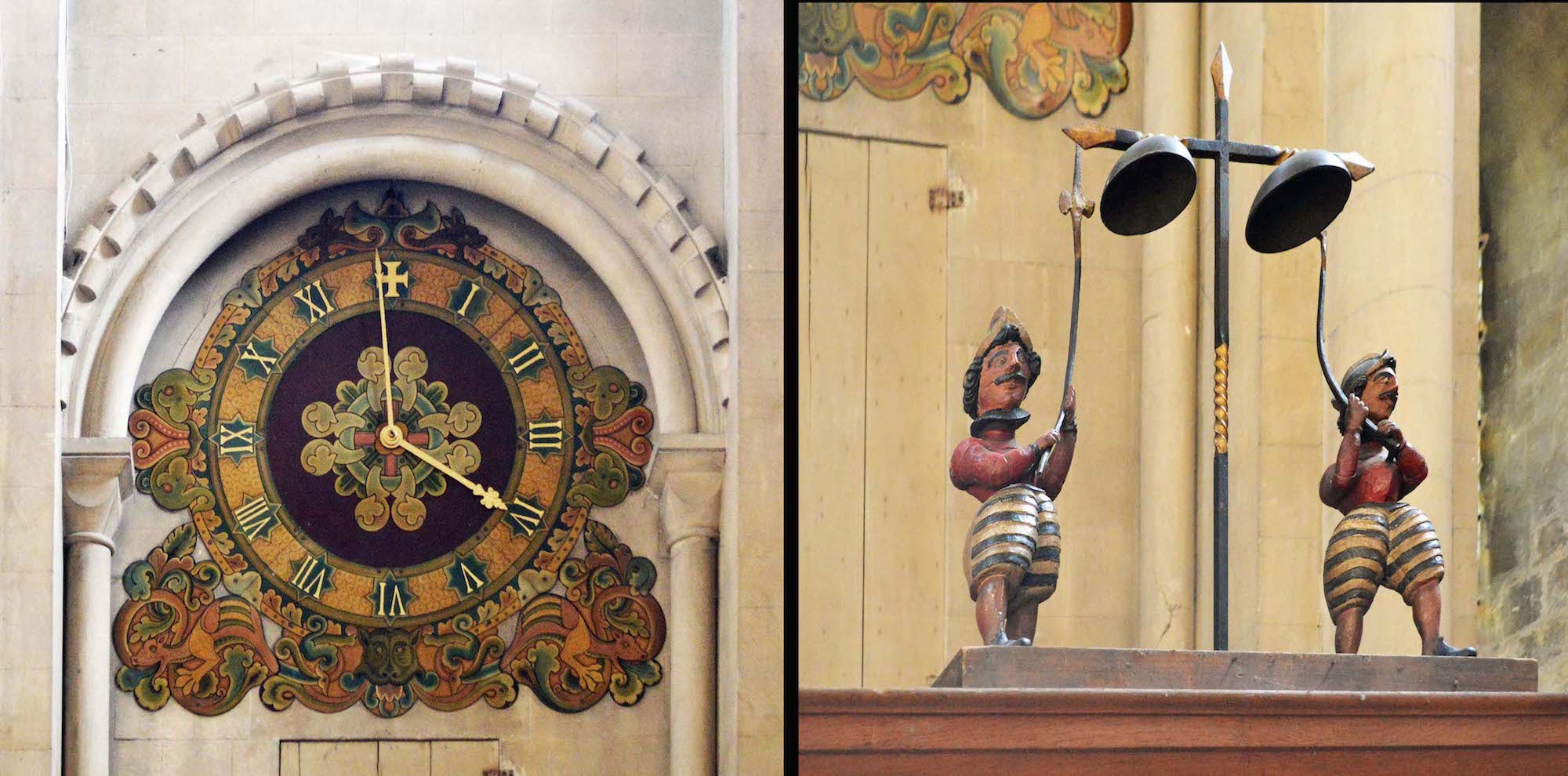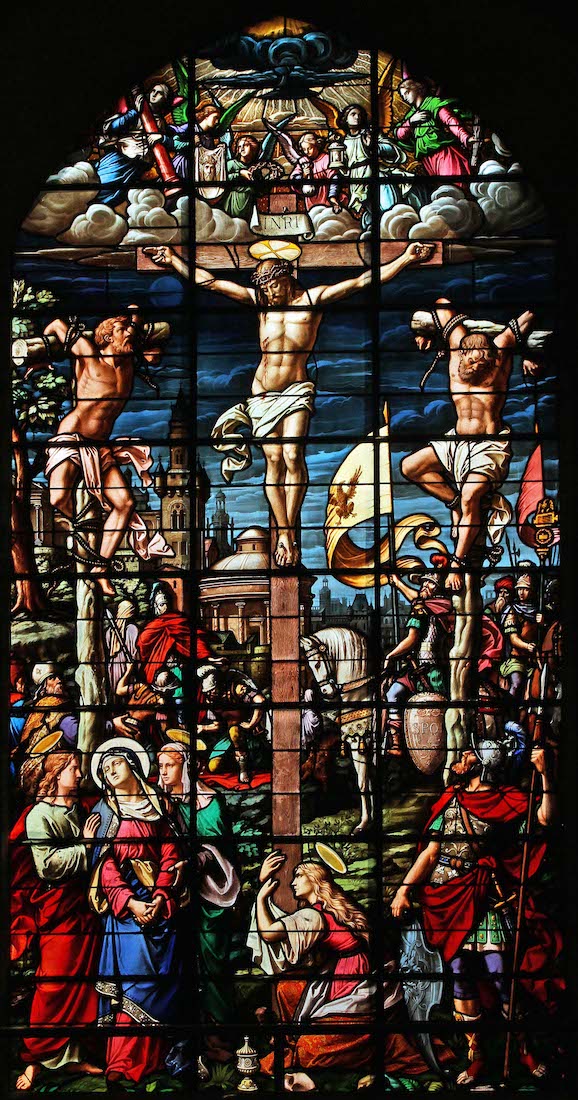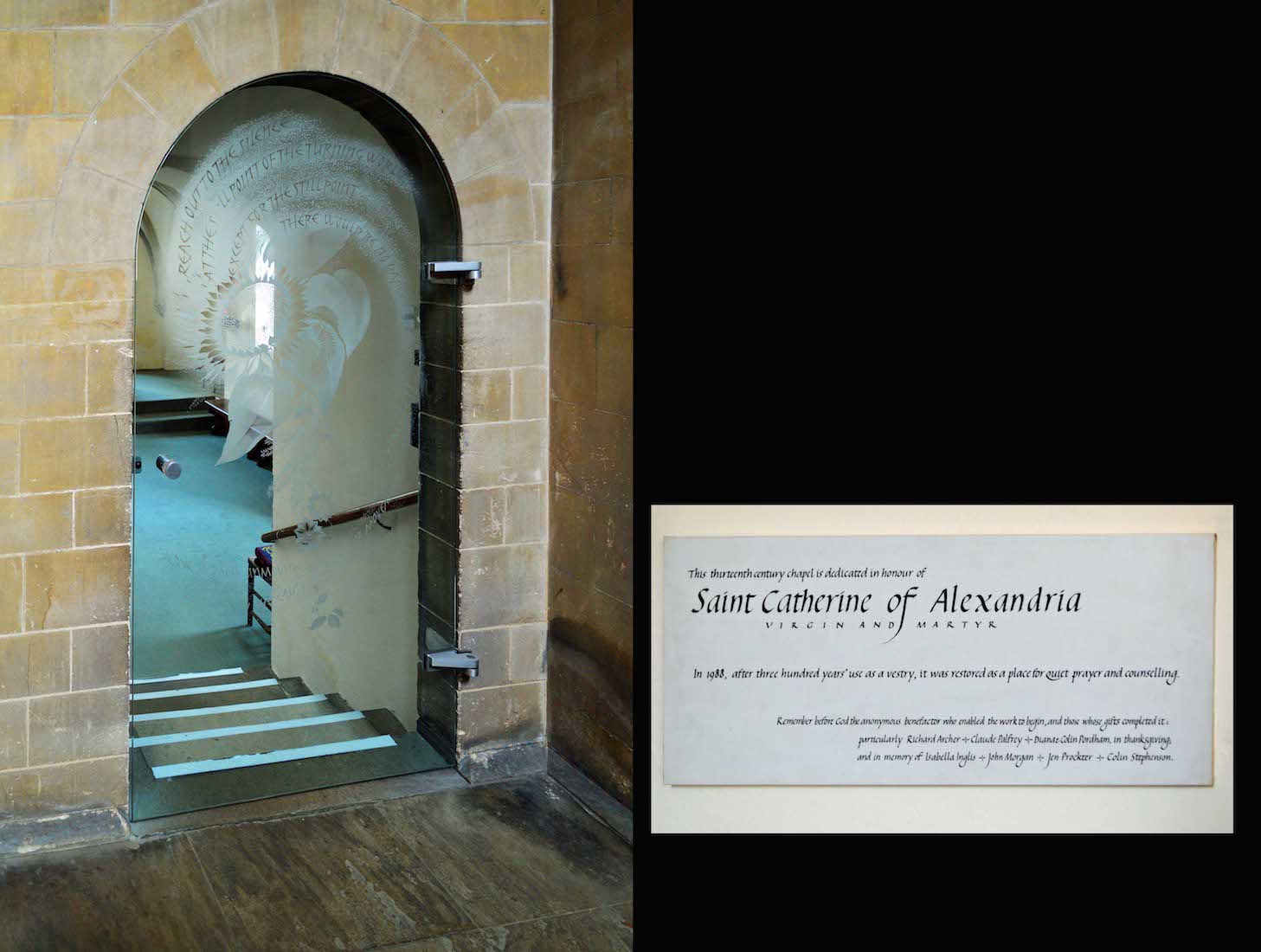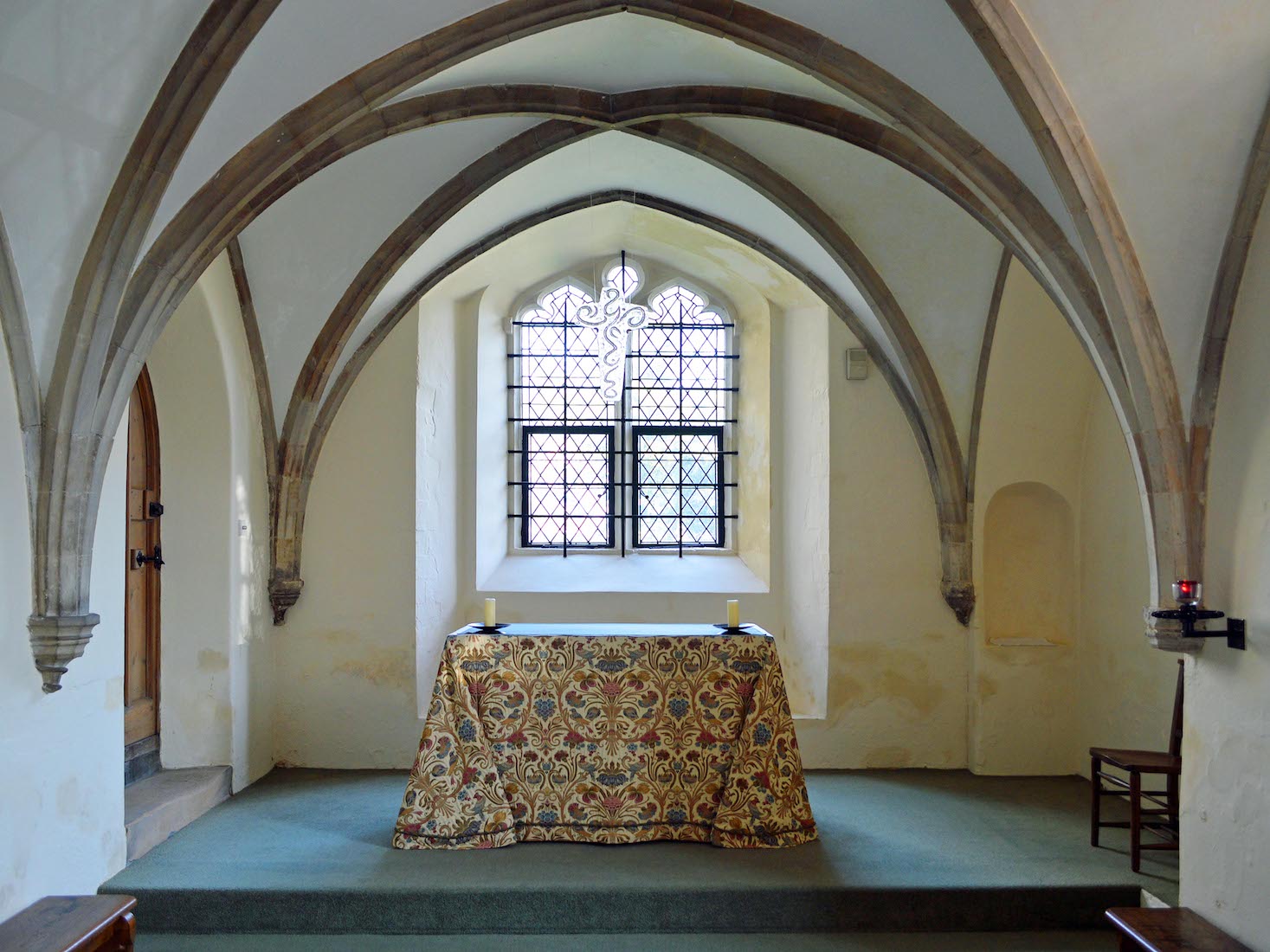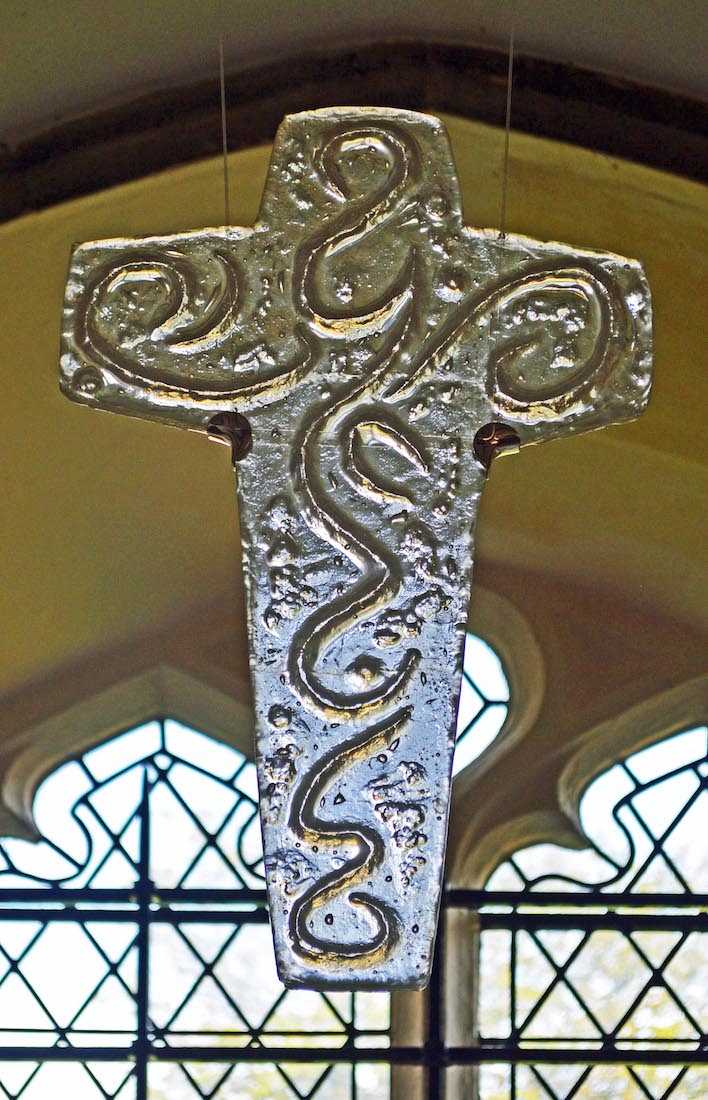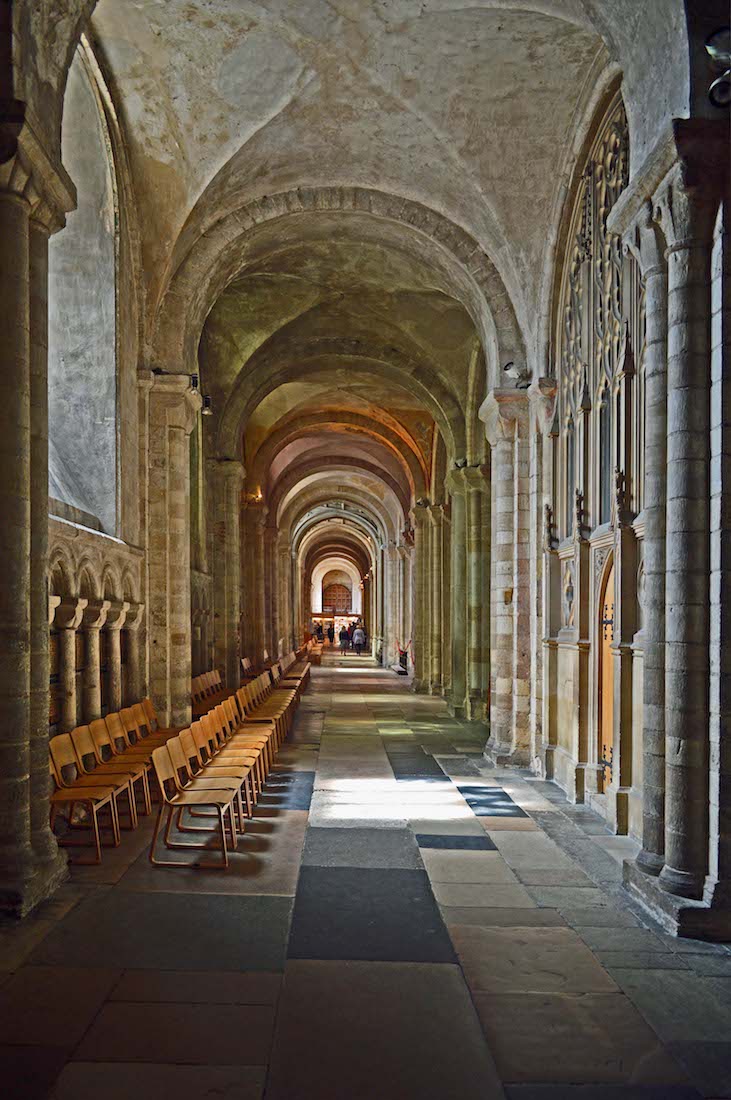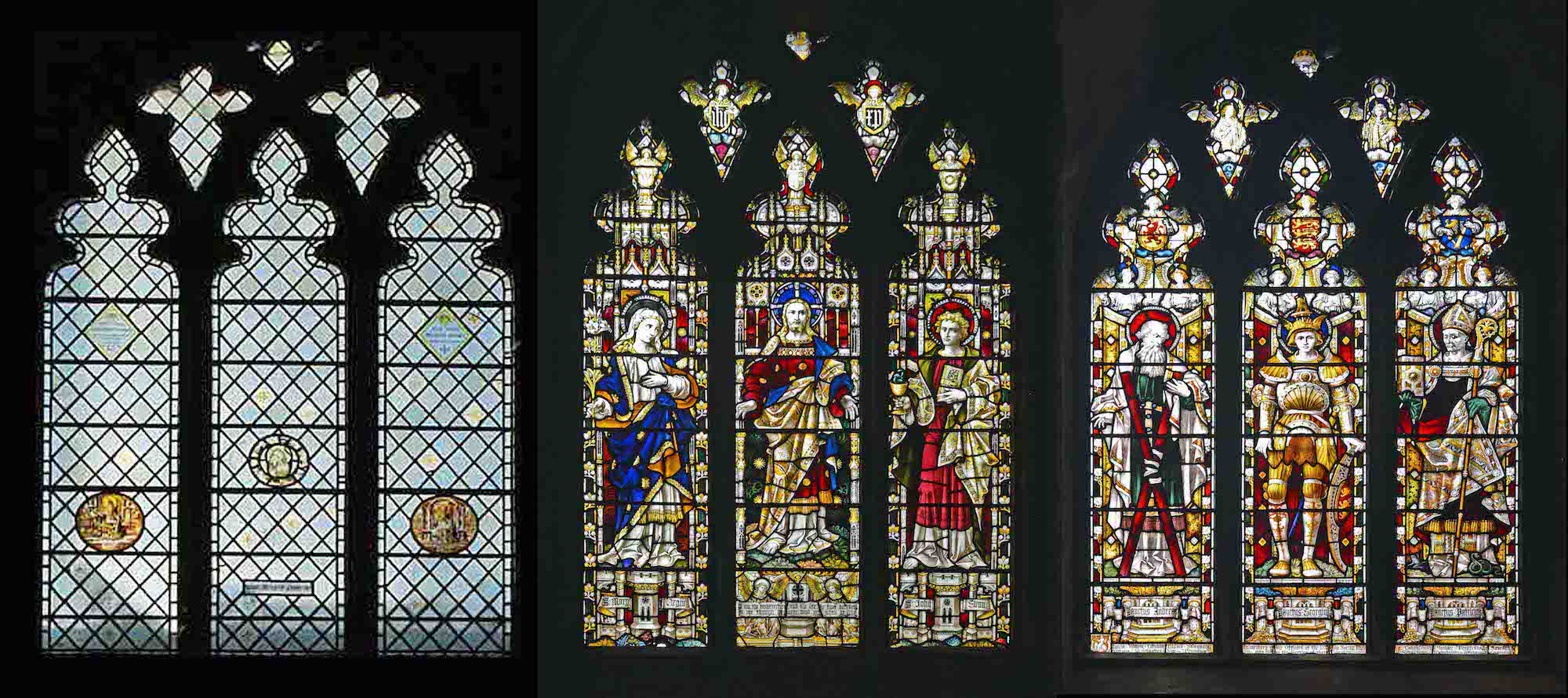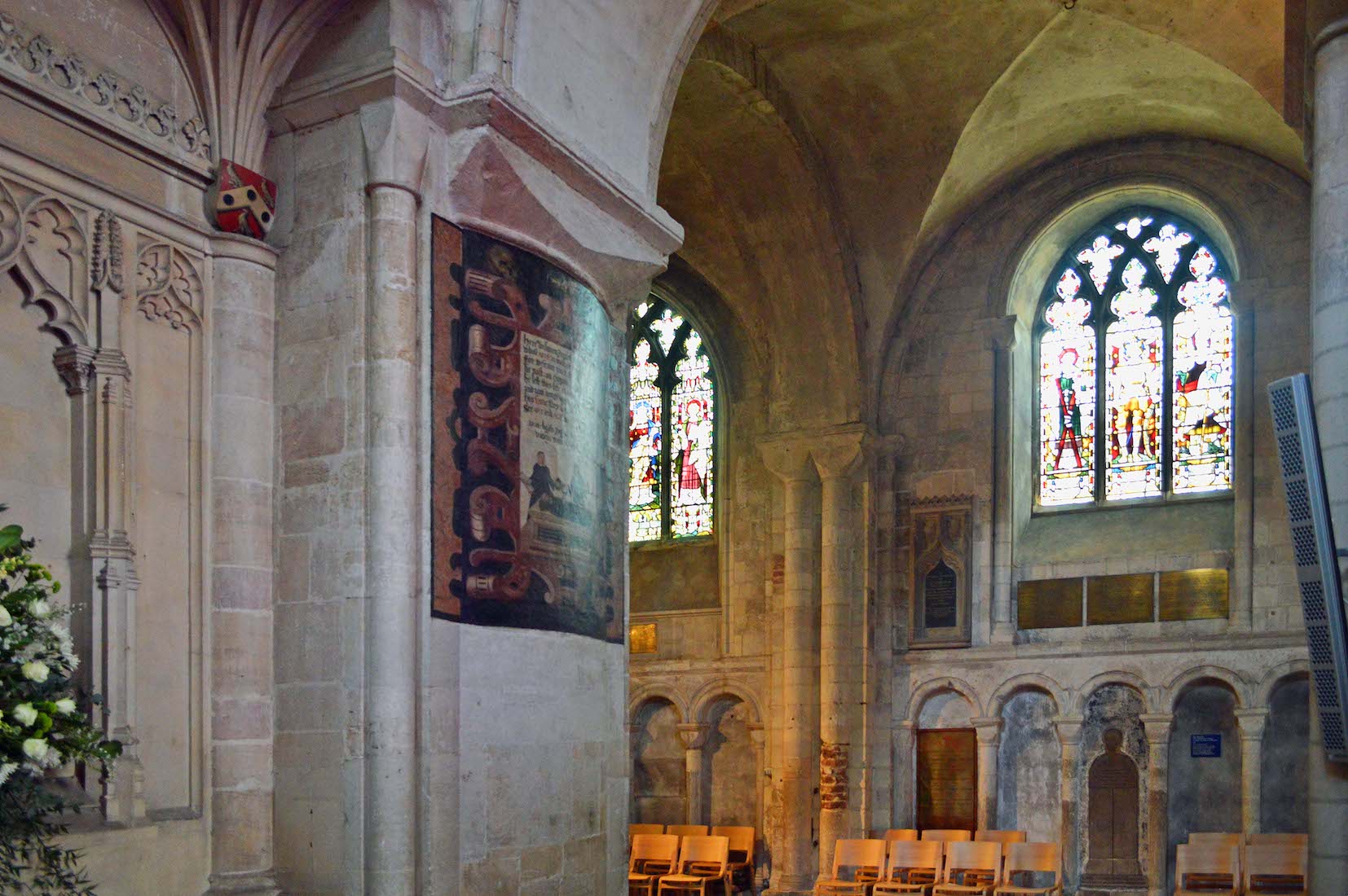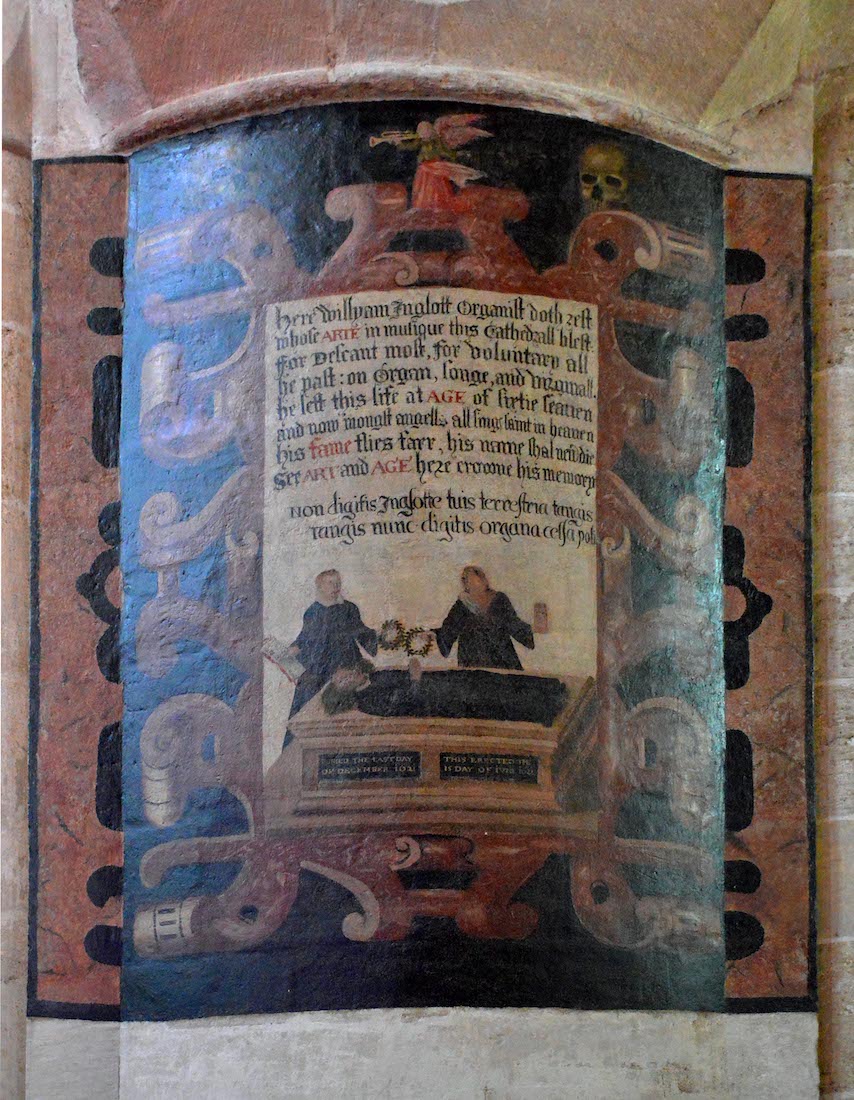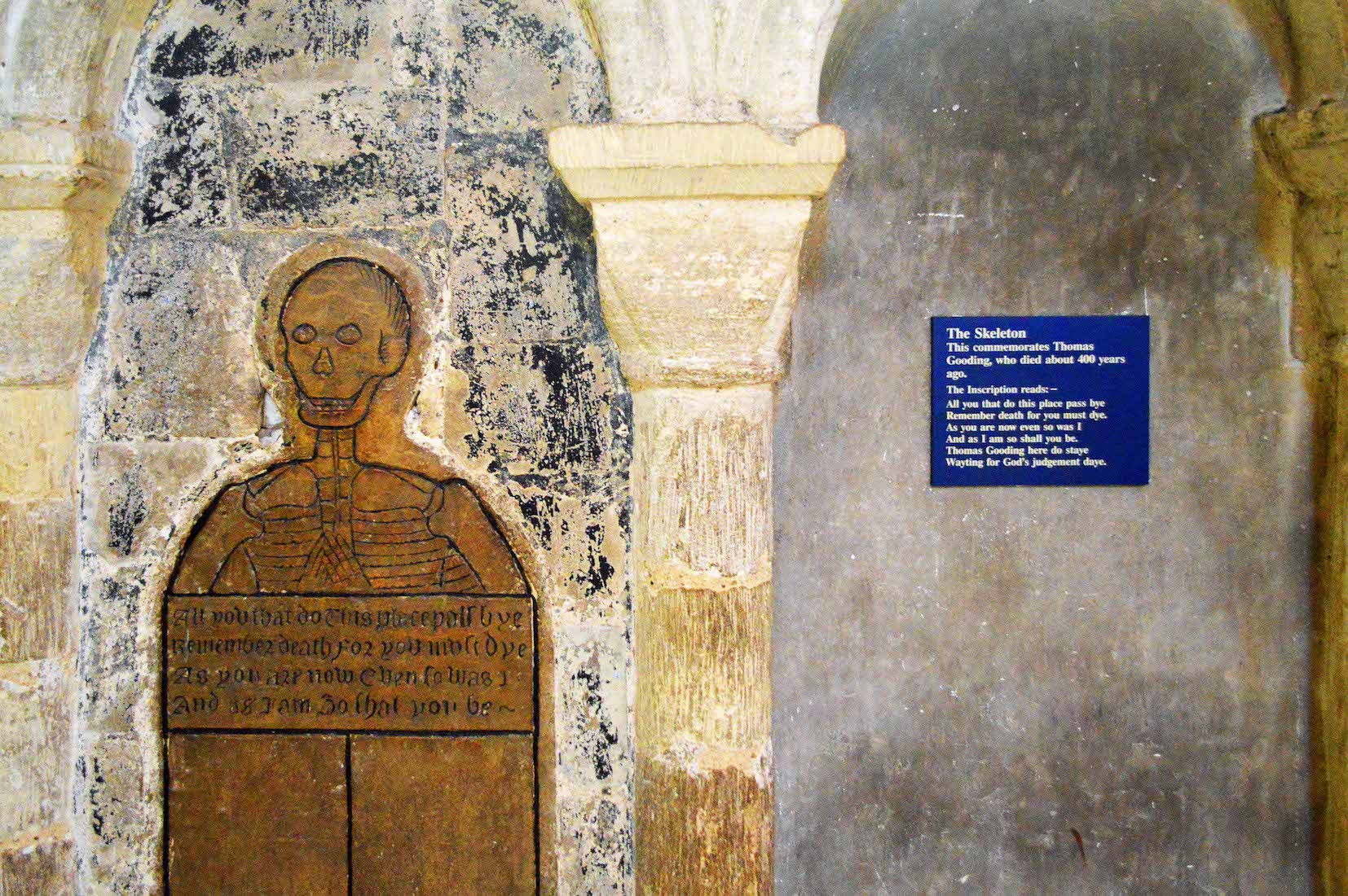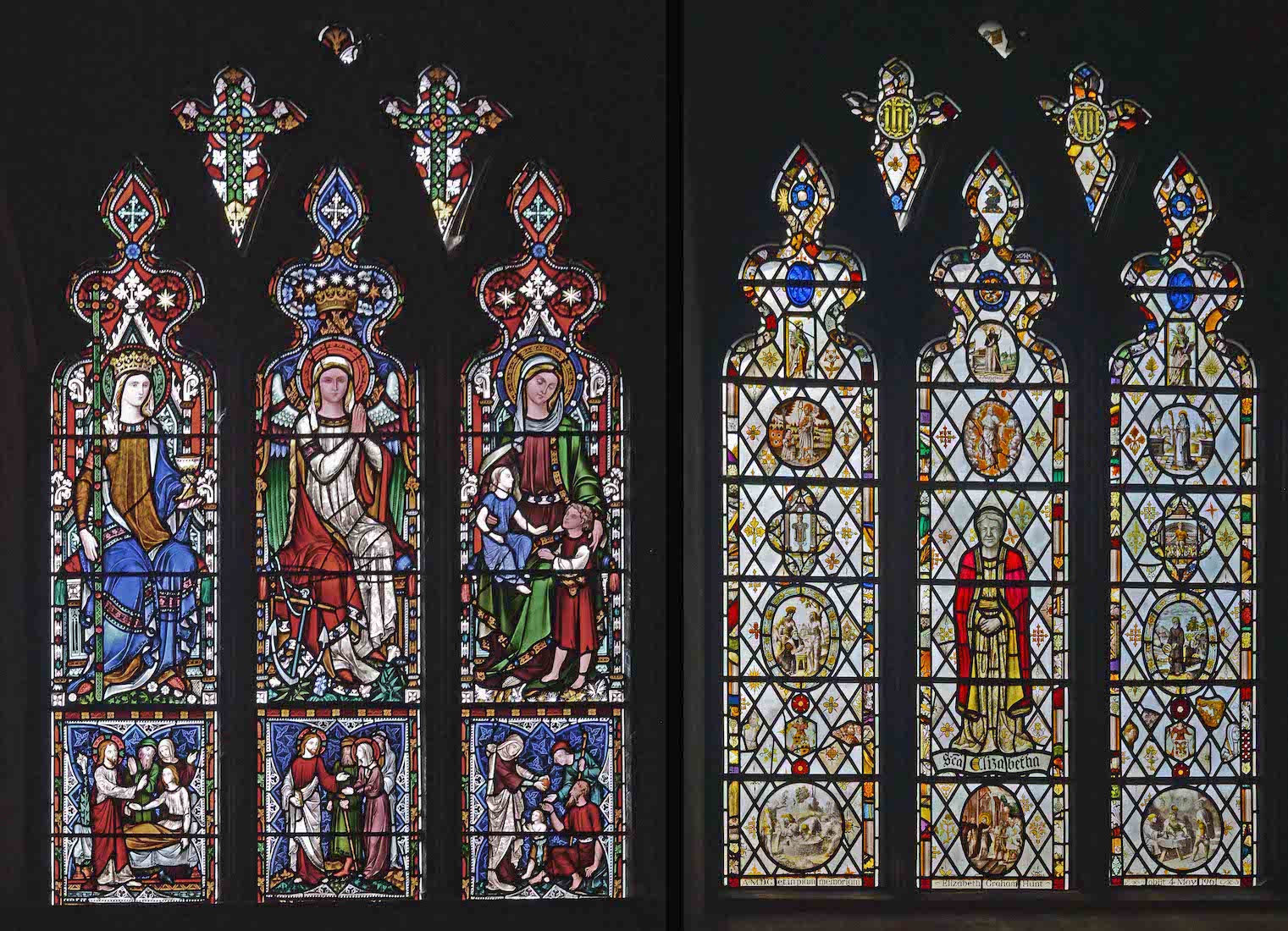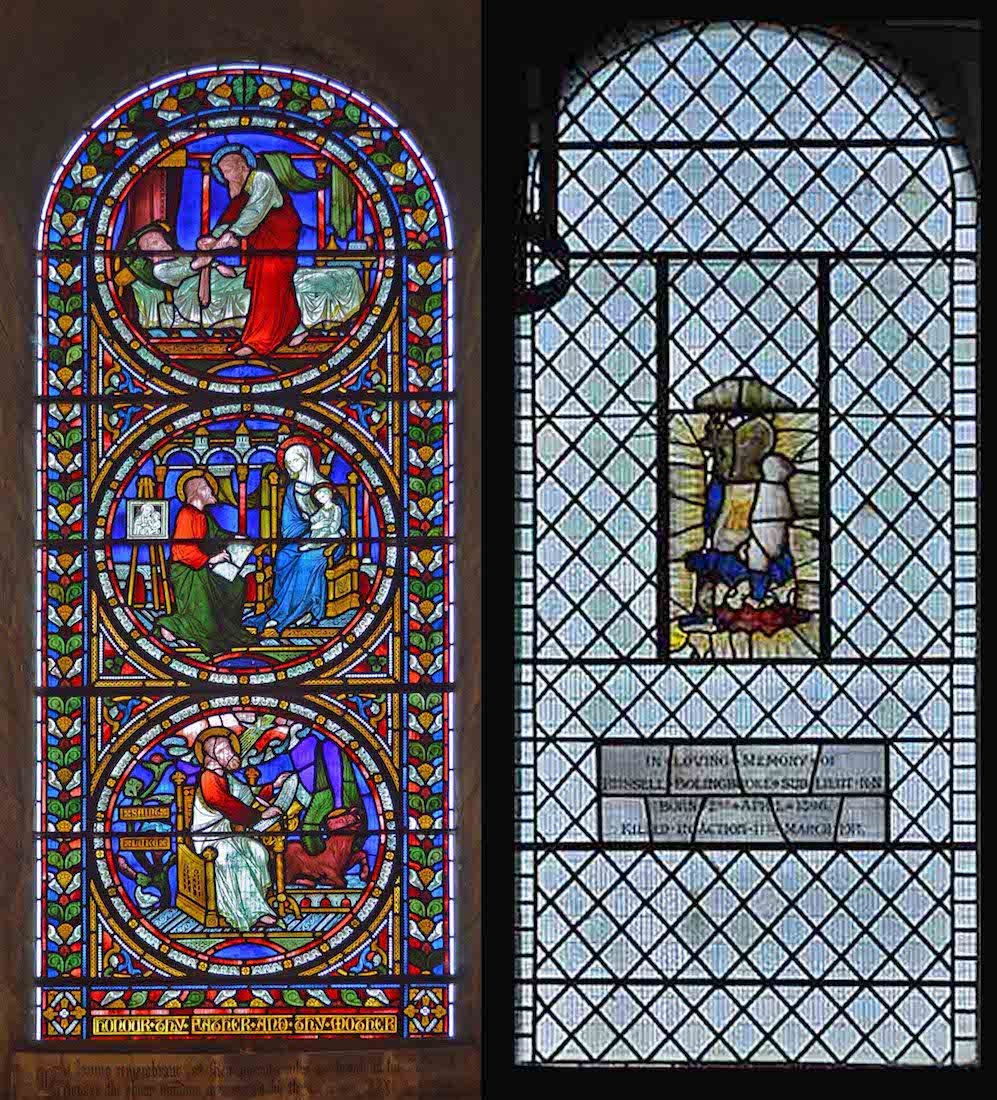
The 1873 East window (left) was designed by J Hardman & Co in a 13th century style. From top to bottom the three roundels depict St Luke as: a physican, an artist and as an evangelist. It was installed in memory of John and Anne Crosse by their children. ••• The 15th century panel in the South window (right) depicting The Virgin Mary with the Child Jesus was a gift from Ringland Church and is a memorial to Russell Bolingbroke, Sub Lieut RN. It was donated in 1917 and moved to its current position by G King and Co in 1960. [Photo Credit: Mike Dixon] PLAN
102. ST LUKE’S FONT
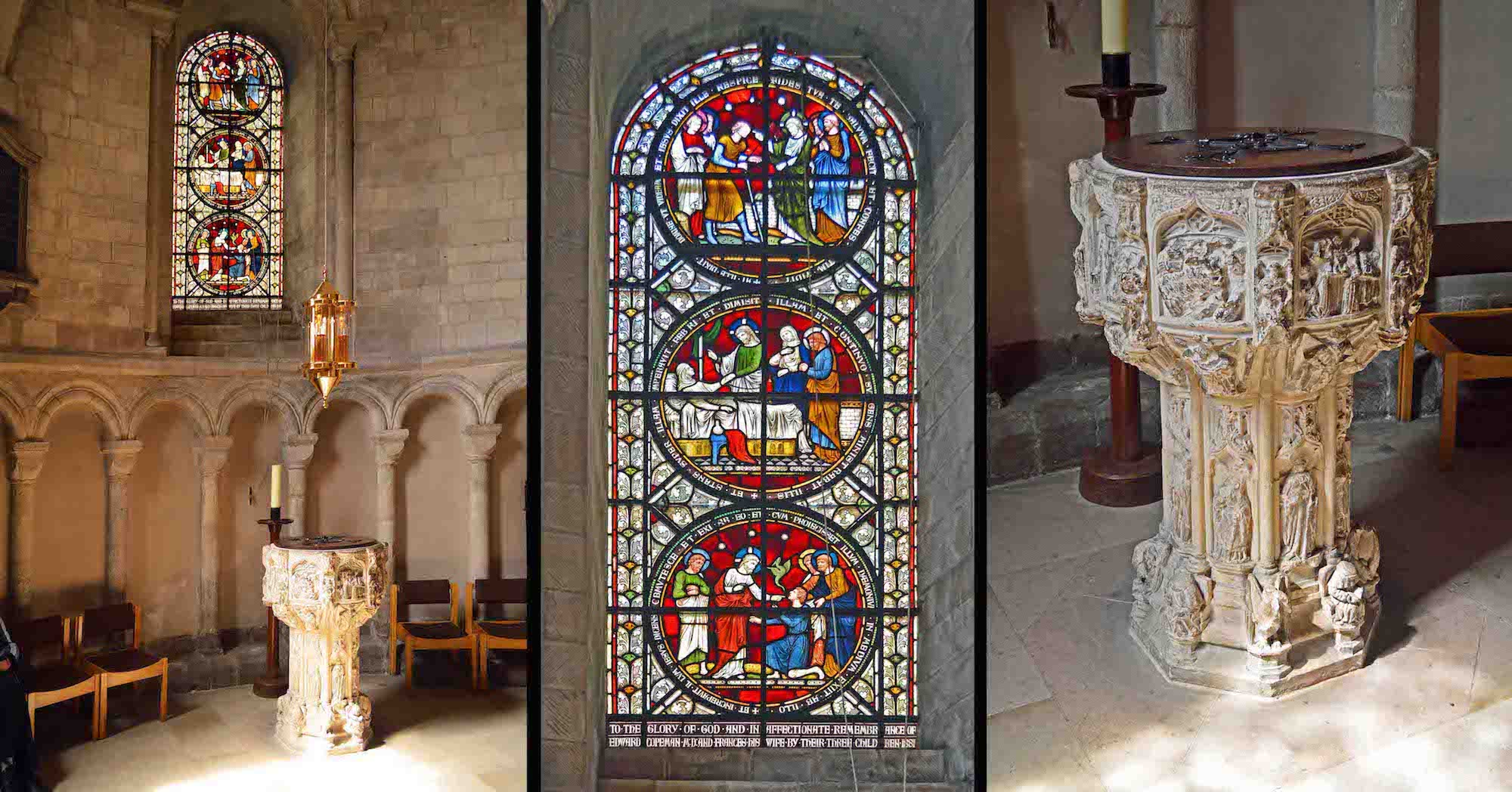
Also in this chapel is a superbly carved late medieval octagonal font, brought here from St Mary in the Marsh church. Behind the font is the West window which celebrates the life of Edward and Frances Copeman. It contains three roundels, each with a Latin quotation from Luke's Gospel. From the top we have Christ healing blind Bartimaeus (Luke 18.41), Christ healing Peter's Mother in Law (Luke 4.38), and Christ exorcising a demoniac (Luke 2.35).
103. LEAVING THE CHAPELS
We now leave St Luke’s Chapel and continue our exploration, following the South ambulatory back towards the nave. We find there are three attractive windows along this stretch of the ambulatory. We investigate these from East to West ... .
104. SOUTH AMBULATORY WINDOWS
These windows are all designed by Clayton & Bell. The 1911 East window depicts St Matthias, recognised by the halberd he carries. The window commemorates the ordination of Frederick Blackett De Chair, which took place in the Cathedral on St Matthias Day 1861. ••• The c. 1910 centre window was donated by the Hansell sisters to give thanks to God ‘for a lifetime of happy worship in this cathedral church’. The glass depicts St Catherine of Alexandria, carrying her symbolic wheel and a palm branch. ••• In the c. 1910 West window we see St Barnabas. The window commemorates Henry Ralph Nevill, Archdeacon and Canon Residentiary 1873 - 1900.
105. BAUCHON CHAPEL
Unexpectedly, there is another chapel along the South ambulatory, but it was closed for renovation during our visit. At left we see eighteen Limoges enamel panels on copper, set in a wooden frame, and dating from c. 1875. The 1964 window was designed by Maria Forsyth and made by Dennis King of G King & Son. The window given in honour of Julian of Norwich is in memory of Harriet Mabel Campbell (1874 - 53). The main lights depict Julian of Norwich together with another eleven Benedictine Saints and other personages. [Photo Credit: Mike Dixon]
106. LEAVING THE AMBULATORY
We now leave the South ambulatory. The doorway leads us through into the South transept.
107. SOUTH TRANSEPT
The South transept is relatively unadorned: four windows of interest on the South wall, a clock face, and a couple of figures just above the doorway. There is also a flag, a brass plate, a floor slab, and a doorway off to the left. Let us look at some of these. We begin with the windows.
108. TOP TRANSEPT WINDOWS
The c. 1874 window at left, erected in memory of Canon Adam Sedgewick, was made by J Hardman and Co. It bears great resemblance to windows found in Norwich's Catholic cathedral – not surprising as John Hardman was also responsible for many of the windows there. From the the top, the roundels represent God creating the world, Noah making a sacrifice after surviving the flood, and Christ's Presentation in the Temple. ••• The late 19th century roundel at right, designed by Ward & Hughes, shows St Thomas (Doubting Thomas) placing his finger in the wounds in Christ's side. [Photo Credits: Mike Dixon]
109. LOWER TRANSEPT WINDOWS
The c1880 Ward & Hughes window at left was made in memory of members of the East Norfolk regiment. The badge of the IX East Norfolk Regiment is depicted over a figure of St Michael. The foot of the window lists battle honours including Sebastopol & St Sebastian. ••• This c 1897 Clayton and Bell window at right was erected in memory of Lt Col Charles Edward Bignold by his sons. The main light depicts St Paul, with his emblematic sword, above a panel showing him in a scene with King Agrippa.
110. CLOCK
The clock face pairs with the face on the exterior wall of the transept. Below are two Jacobean jacks which were reputedly recovered from a market stall and brought back to the Cathedral.
111. SOUTH TRANSEPT, EAST WINDOW
There is in fact another striking window in this transept, to our left. This 19th century crucifixion scene is made in French glass in a ‘vigorous’ 16th century renaissance style. It was purchased after the war by Mr & Mrs Wright Taylor whose only son Lieut GR Stanley Taylor RAF, was killed in action in France in 1917. It was given to the Cathedral in 1961. [Photo Credit: Mike Dixon]
112. ENTRY TO ST CATHERINE’S CHAPEL
There is also a little 13th century chapel to the left (East) of the South Transept. The modern glass door to this St Catherine's Chapel is engraved with a quotation: ‘I reach out to the silence, at the still point of the turning world. Except for the still point, there would be no dance.’
113. ST CATHERINE’S CHAPEL
In 1988 after 300 years’ use as a vestry, it was restored as a quiet place for prayer and counselling. The chapel has a small covered altar with two candlesticks, a red sanctuary lamp to one side, and an unusual cross above.
114. ST CATHERNE’S CHAPEL CROSS
The Cross is very unusual: rough-formed silver with a raised pattern of squiggly lines. Perhaps it has some deep meaning!
115. SOUTH NAVE AISLE
We leave the Chapel and the South transept and return to the nave. Our path brings us to the South aisle, still of some length in spite of being curtailed by the Cathedral shop. There are eight windows in this wall of the nave. We look at the first three. The first window is the George King memorial window installed in memory of ‘George King 1886 - 1965, Glazier and Freeman of the city, who did much work here.’ It was made and installed by his son Dennis King who is also remembered in a lozenge (right). Installed in 1997 it simply reads ‘Dennis King, Master Glazier 1912 - 1995’. Continued ...
116. SOUTH AISLE WINDOWS I
Continued ... . The three main lights of the first window consist of clear patterned antique 15th century glass. Inserted within are three roundels: • A Flemish panel depicting St Gregory, dating from 1558. •• A Norwich panel depicting St John the Evangelist dating from the 15th century. ••• A Flemish panel depicting St Augustine, dating from 1558. ••• The next two windows are by Clayton & Bell. The main lights in the second window show the Blessed Virgin Mary, Christ and John the Evangelist. ••• The third window depicts St Andrew, St George and St Patrick.
117. PULPITUM
This view shows that the pulpitum is in line with the arch separating wondows 2 and 3. Notice the memorial text on the pulpitum, and the strange skeleton figure on the aisle wall.
118. PULPITUM MEMORIAL TEXT
This memorial remembers a seventeenth-century organist who is unknown today. It is a sad fact that composers are remembered far more frequently than those who perform their music.
119. SKELETON FIGURE
The skeleton commemorates Thomas Gooding who died some 400 years ago. The inscription reads: ‘All you that do this place pass by // Remember death for you must dye. As you are now even so was I // and as I am so shall you be. // Thomas Gooding here do staye // Wayting for God’s judgement daye.’ Thomas Gooding was a former mason of the Cathedral who reputedly asked to be buried in an upright position, in the belief that this would give him an advantage in his passage to the after life.
120. SOUTH AISLE WINDOWS II
Windows 4, 5: This brightly coloured 1855 window was made by John Hardman & Co. Dedicated to the memory of Edmund and Lucy Wodehouse, the inscription reads : ‘And now abideth Faith, Hope and Charity these three’. From left to right we see : Faith (with cross & chalice); Hope (with an anchor); Charity (with two children). ••• The Elizabeth Graham Hunt memorial window was paid for by her husband the Rev. Cannon Stather Hunt in 1965. Installed by G King and Son it is made up of a modern figure of St Elizabeth (whose face is a portrait of Elizabeth Hunt) surrounded by Renaissance and later Flemish roundels.


